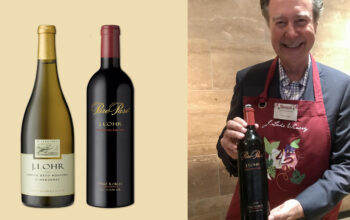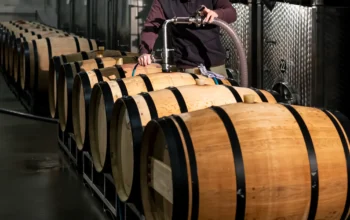Do you know it, the coeur en vin? Freely translated into Dutch: through the heart of the wine. This then refers to the cork in a wine bottle, which is pierced with a needle that allows you to pour wine. I am talking about an American invention that has become internationally known under the name Coravin. Ah, that one! Of course you - or if I may be so bold, you - know it, as a WINELIFE reader. Chances are you've also seen one in use, at a wine bar or restaurant serving special wines by the glass.
Excruciatingly slowly, the wine emerges from that microscope-like device into your glass, but that actually only makes it more intriguing. I recently started using it at home and I can tell you: it is addictive. Because the cork doesn't have to come out of the bottle and the remaining wine in the bottle stays good, you can run a sort of wine bar at home and try a different wine each time. Of bottles I am very attached to, I don't have to say goodbye in one go and I think I start drinking them a bit more consciously and less quickly too.
How it works:
You put the Coravin right on the bottle neck and the needle smoothly glides right through the capsule and cork into the wine bottle. (By the way, if you know that the inventor graduated from MIT and specialised in medical needles, you may, like me, get the association with piercing a heart with a hypodermic needle, like in that Tarantino film. Please quickly forget that I said this). For every sip of wine you pour through the hollow needle, non-reactive argon gas flows back into the bottle. Pull off the device and the tiny hole is hermetically sealed again within a minute thanks to the pressure and elasticity of the cork. So no oxygen enters the bottle and the wine is basically preserved as if it had never been opened. Afterwards, put it back in a cool place, because it's not just oxygen that accelerates the wine's ageing and eventual demise; higher temperatures do too.
This system obviously does not work with a glass or other hard stopper on which the needle would break, but fortunately there is a nice solution for screw caps. For that, you immediately replace the cap with the included Coravin screw cap, which lets itself be pierced just like a cork and then closes again. After that, the wine will be good for 'only' 3 months, because of course some oxygen has been added when changing the caps. Still handy for those lovely German Rieslings or Australian Shirazzen.
However, it does add about half a euro to the price of each glass, as you can empty three to four bottles with a tenner argon gas capsule. Therefore, it makes more sense to use the coeur en vin only for special and more expensive wines - not to mention the purchase price of the device itself (from 200 euros). Besides the price, there is one major drawback: for bubbles, the system does not yet work. So you will really have to empty any bottle of Dom Pérignon or Krug Grande Cuvée in one go this year. A very Happy New Year!
This is a column by Karin Leeuwenhoek
Don't want to miss a single edition? Subscribe then subscribe to Winelife Magazine now!
Want to stay up to date with the best articles? Follow Winelife magazine on Instagram, Facebook and sign up for our fortnightly newsletter.




